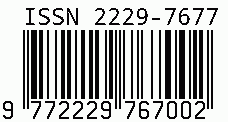
International Journal on Science and Technology
E-ISSN: 2229-7677
•
Impact Factor: 9.88
A Widely Indexed Open Access Peer Reviewed Multidisciplinary Bi-monthly Scholarly International Journal
Plagiarism is checked by the leading plagiarism checker
Call for Paper
Volume 16 Issue 4
October-December 2025
Indexing Partners



















Challenges and Limitations of IoT Attendance Systems Without Blockchain Integration: A Comprehensive Analysis
| Author(s) | Irfan Israil Sheikh, Dr. Pankaj B. Dhumane |
|---|---|
| Country | India |
| Abstract | The Internet of Things (IoT) has revolutionized attendance management by enabling automated, real-time tracking through devices like RFID tags, biometric scanners, and mobile applications. However, IoT-based attendance systems that do not leverage blockchain technology face critical challenges, including security vulnerabilities, data privacy risks, scalability constraints, interoperability limitations, and reliability issues. This paper provides an exhaustive analysis of these problems, supported by real-time data from industry reports and case studies (up to July 2025), visualized through tables and charts. We explore issues such as unauthorized access, data tampering, single points of failure, protocol incompatibilities, and system downtimes, detailing their technical, operational, and economic impacts. Mitigation strategies, including advanced encryption, hybrid architectures, standardization efforts, and privacy-enhancing technologies, are thoroughly evaluated, highlighting their limitations in non-blockchain frameworks. This study aims to inform researchers, practitioners, and policymakers about the challenges and guide the development of robust IoT-based attendance systems. |
| Field | Engineering |
| Published In | Volume 16, Issue 2, April-June 2025 |
| Published On | 2025-06-06 |
Share this


CrossRef DOI is assigned to each research paper published in our journal.
IJSAT DOI prefix is
10.71097/IJSAT
Downloads
All research papers published on this website are licensed under Creative Commons Attribution-ShareAlike 4.0 International License, and all rights belong to their respective authors/researchers.

